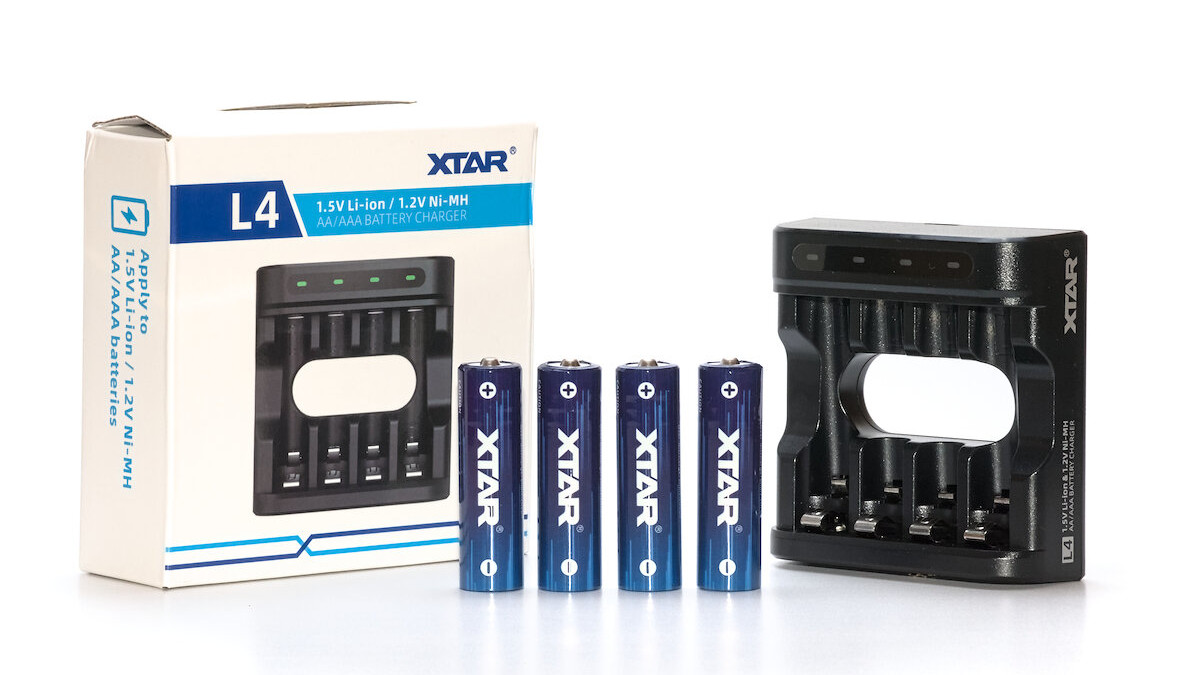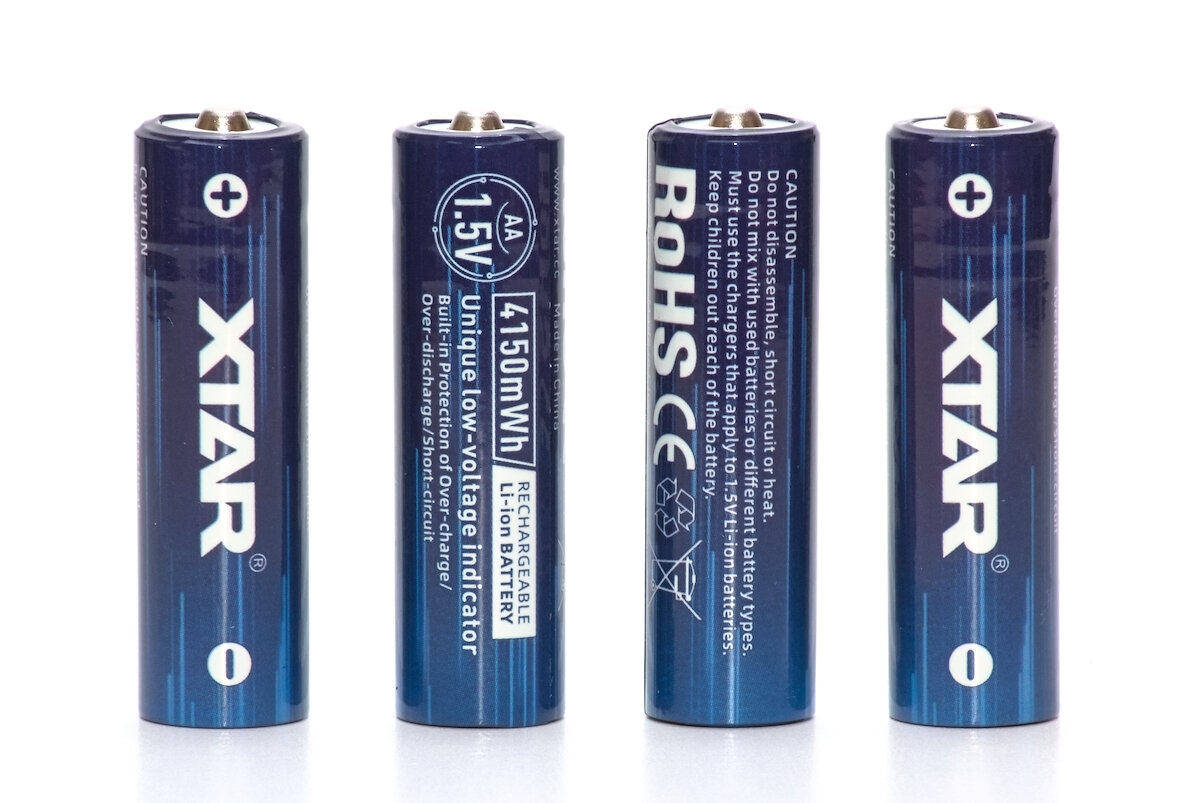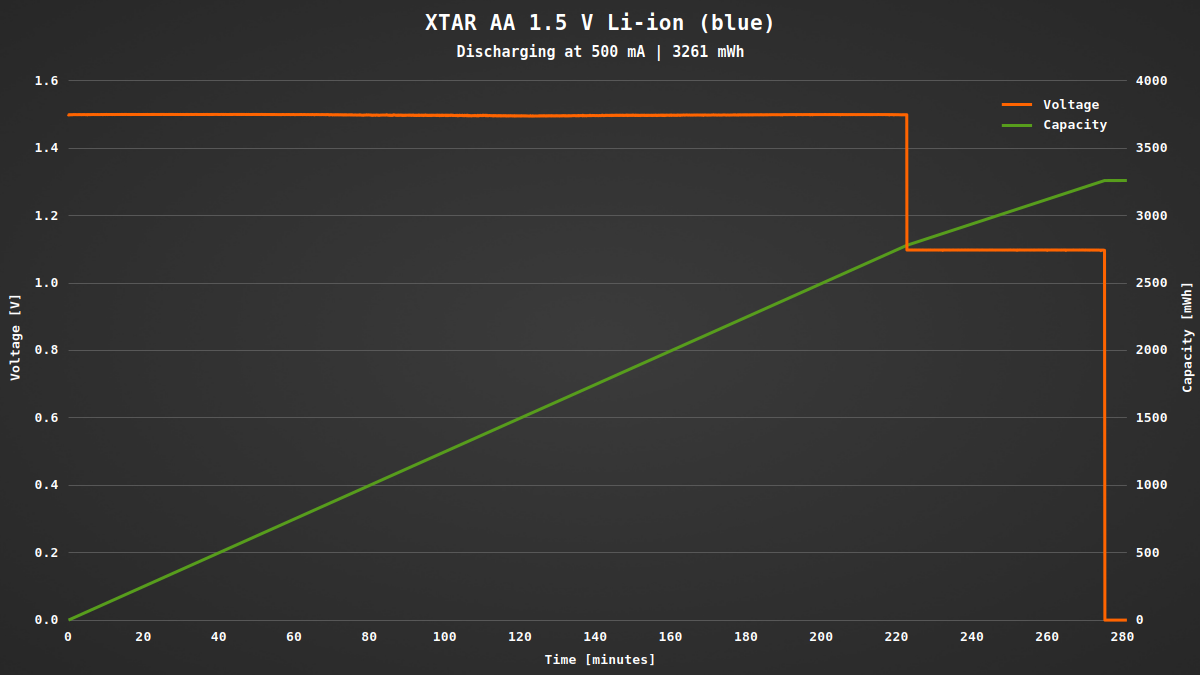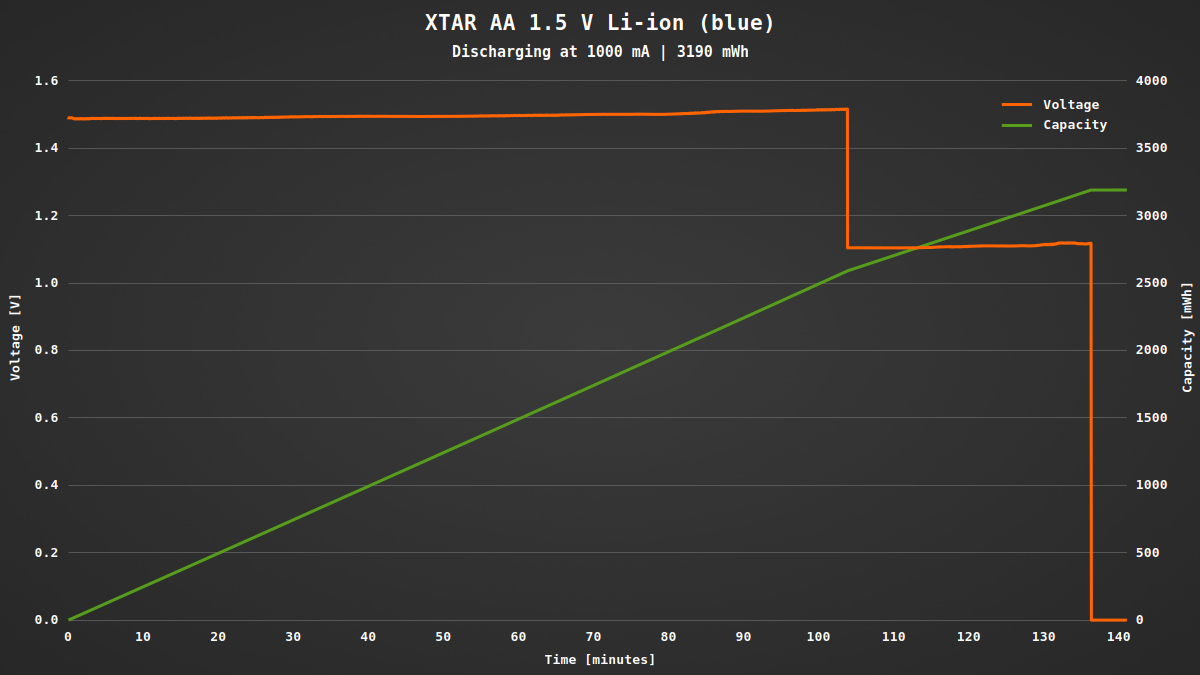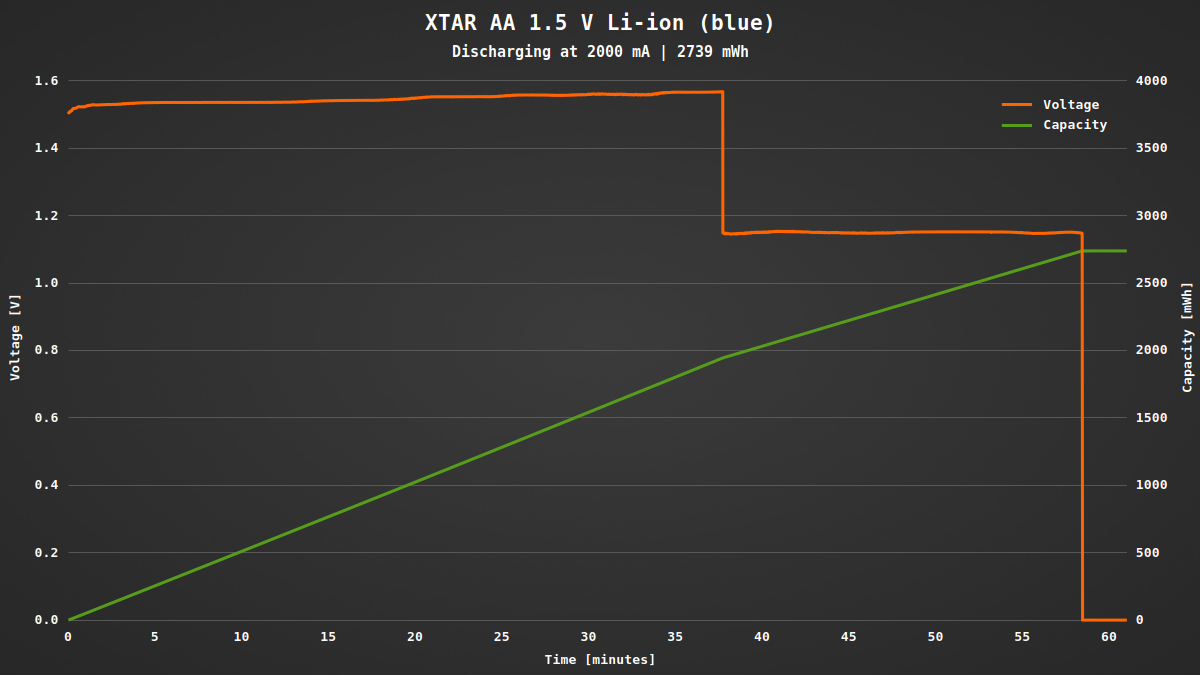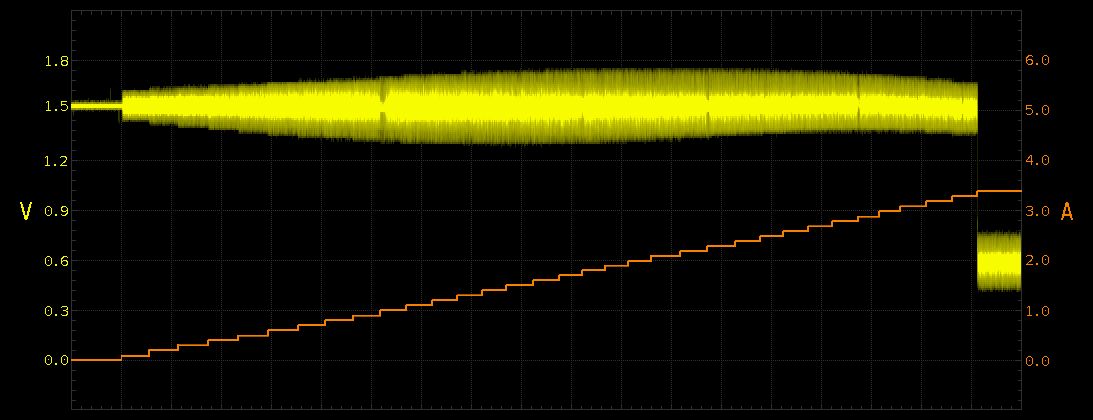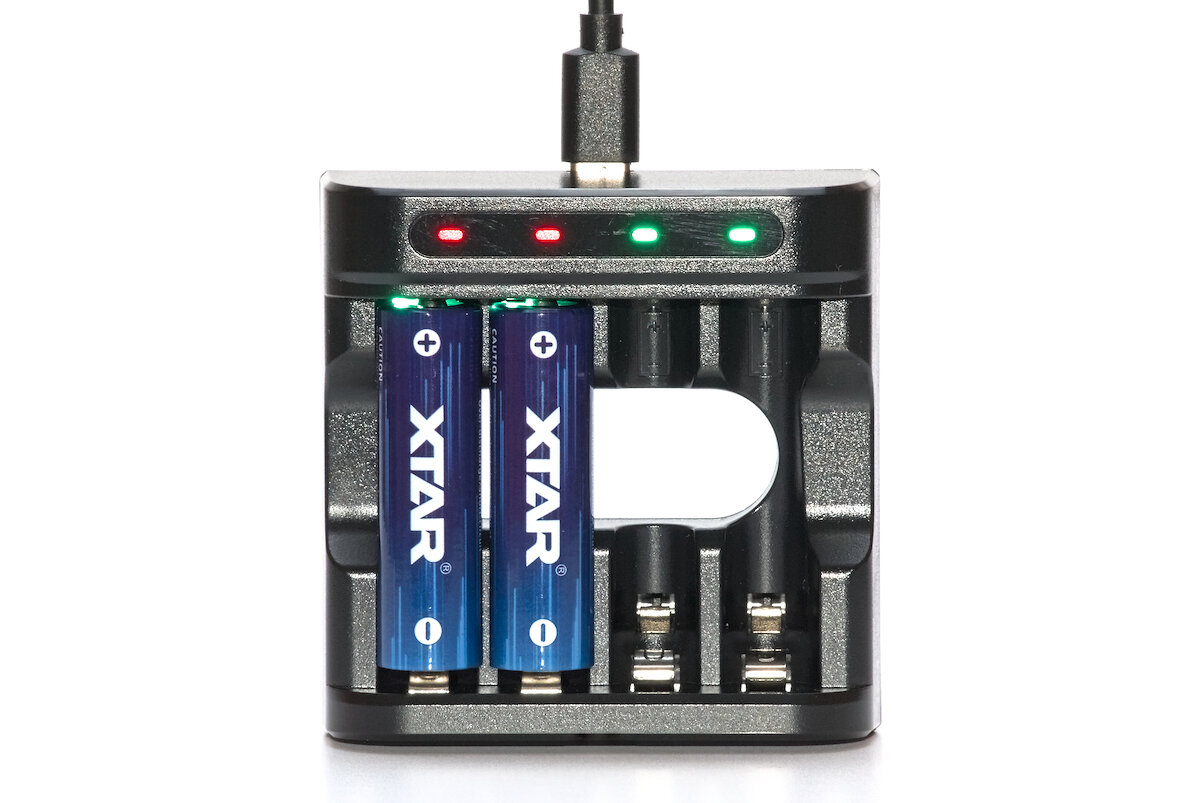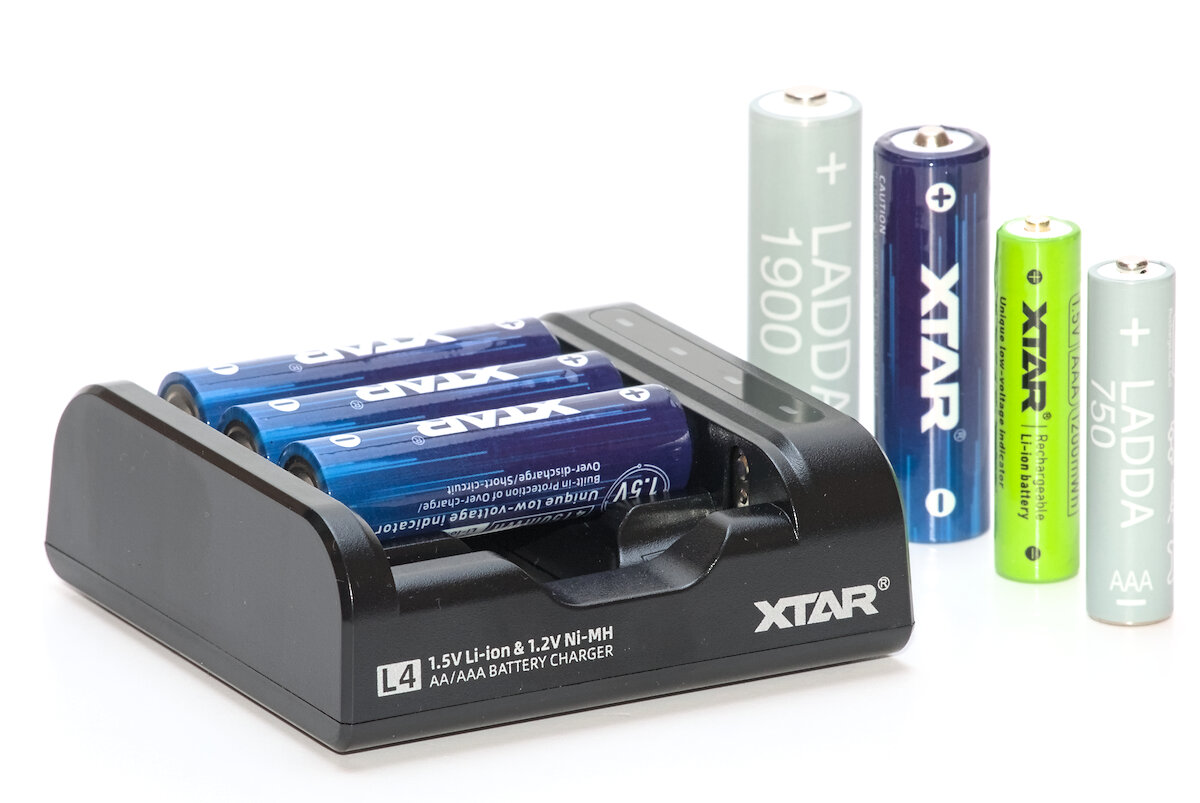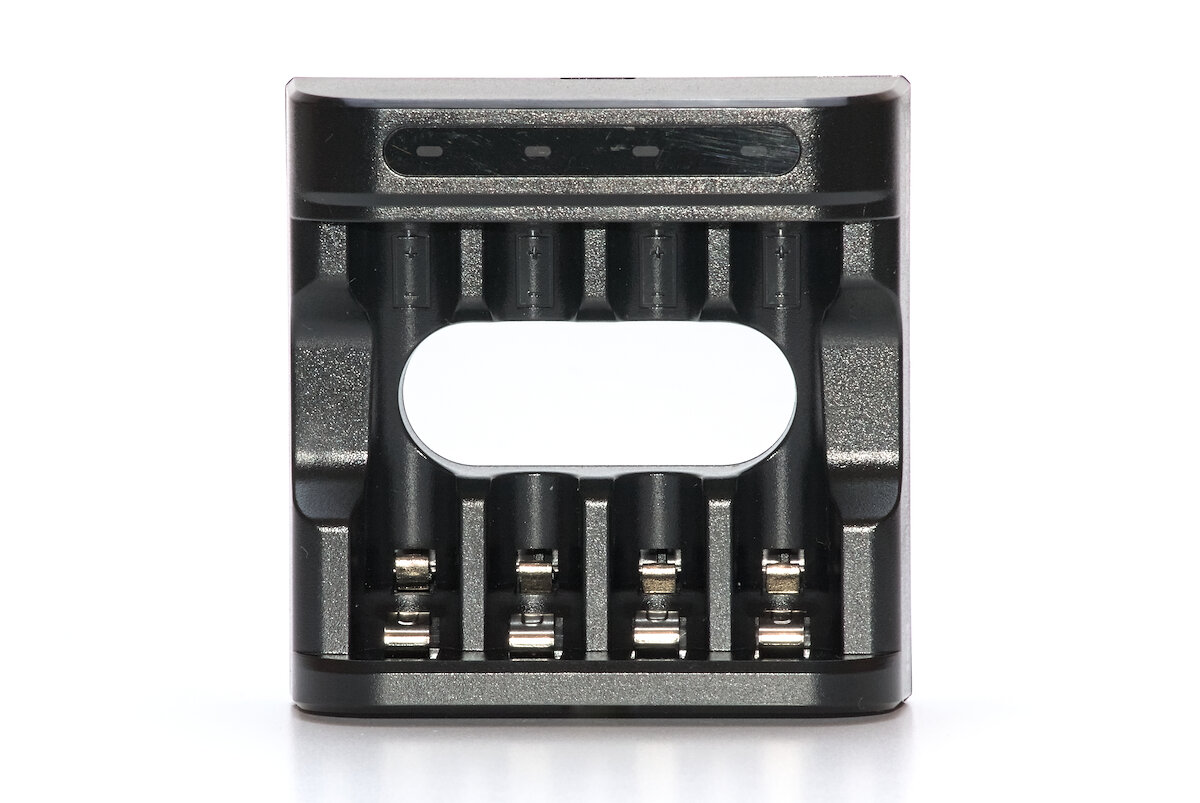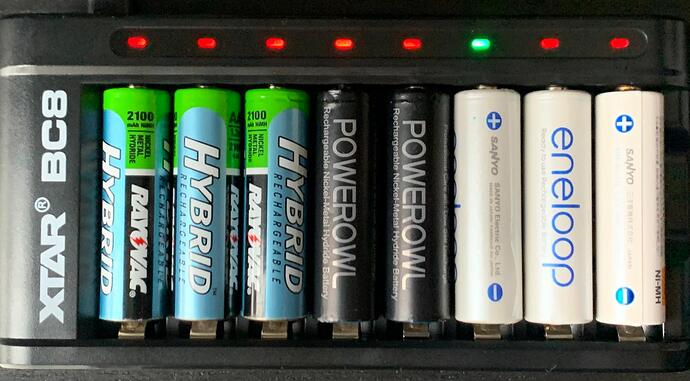I’ll keep the introduction short. Most of you should already know the benefits of LSD NiMH batteries (“Eneloop”) in comparison to alkaleaks. And you might also know, that some devices don’t like the lower voltage of NiMH batteries compared to full alkaline batteries. In this case special Li-ion batteries with integrated 1.5 V step-down converter might be an alternative.
Today I’d like to show you the “new” XTAR 1.5 V 4150 mWh AA batteries. I got them several weeks ago, but unfortunately the review got delayed by a horrible death in my family (my computer) and a Covid infection (me). The latter was cured, the new computer is still not performing like I want, so I wasn’t able to do all measurements as planned.
Batteries and charger were sent to me by XTAR for this review, without any obligations. Thank you very much!
This review is also available in German on my website: SammysHP Blog › XTAR 1,5 V 4150 mWh AA Akkus
XTAR 1,5 V AA batteries (blue)
They don’t have a real model number. The website calls them “XTAR 1.5V AA 4150mWh Battery”. I’ll call them “the blue 1.5 V AA batteries from XTAR”.
Its size is identical to a regular AA battery (50.5 mm long and 14.3 mm in diameter), with a weight of 19 g and thus only about 66% of a NiMH battery.
Their rated capacity is 4150 mWh. In comparison, LSD NiMH batteries have a capacity of around 2500 mWh. Due to losses in the conversion to 1.5 V the effective capacity will be smaller. In my measurements I got results in the range between 2739 and 3261 mWh depending on the discharge rate.
Here you can also see one of the nice features of the XTAR batteries: When the batteries are almost empty, they don’t suddenly shut off, but switch to a lower voltage of 1.1 V. This allows devices to detect that the battery is empty and show a warning.
Per specifications the batteries are rated for up to 2 A discharge current. In my test I have increased the current further up to 3.2 A when the voltage started to drop. On higher currents the battery got significantly warmer, thus I suggest to not exceed the manufacturer rating of 2 A.
As you can see the voltage has pretty significant noise, even under low load. This might interfere with sensitive devices like radio receivers. The small regulator (according to XTAR a synchronous buck converter running at 1.5 MHz) doesn’t provide enough filtering, probably due to its size.
For charging the XTAR AA batteries you’ll need a special “charger”. In quotes because it’s less a charger than a cradle to supply the batteries with 5 V. The actual charging controller is integrated in the batteries. They are charging at up to 450 mA, a good rate for batteries of this capacity.
A suitable charger is the XTAR L4, which I’ll show in the next section.
During charging an LED at the top of the batteries will blink in green. When the charging has finished, it will continuously light up in green.
XTAR L4 charger
This charger came together with the four batteries. It’s called “L4” and can not only charge special 1.5 V Li-ion batteries at 5 V, but also regular 1.2 V NiMH batteries.
It has four slots to charge four batteries simultaneously. They accept batteries of size AA and AAA. Each slot has its own red/green status indicator LED:
| Color | Meaning |
|---|---|
| Green: | Standby / charging finished |
| Red: | Charging |
| Red, slow blinking: | Battery type detection or “0 V activation” |
| Red, fast blinking: | "0 V activation failed“ |
I’m not really sure what this “0 V activation” means because NiMH batteries don’t have a protection circuit that could trip and these special 1.5 V Li-ion batteries have their own charging circuit and only need a constant 5 V supply.
To connect the power supply there is a USB-C port at the top of the device (5 V, 2 A).
A hole at the rear side allows easy removal of the batteries. The case is very sturdy and I wasn’t able to open it. This means that I don’t know what’s inside.
My original plan was to analyze the charging behavior and show you some measurements. Unfortunately my computer died just before I started with the measurements. So far I haven’t been able to setup my equipment with the new computer and this review is in the queue for so long that I don’t want to delay it any further. But I’ll try to update this post once I got all the data.
According to the official product page the charger will charge a regular 2500 mAh NiMH battery in six hours. This sounds like a low charging current which makes a -dV/dt termination unreliable.
Conclusion
For most situations regular low self-discharge NiMH batteries are the perfect choice. But sometimes you’ll need an alternative. The blue XTAR 1.5 V 4150 mAh AA batteries provide constant 1.5 V output for the most part of their runtime. At the end they’ll switch to 1.1 V to allow devices to give a low battery warning. These batteries make it possible for you to operate devices that are picky about their power supply and do not work well with the lower voltage of regular NiMH batteries. Also their capacity is higher than most NiMH batteries.
One disadvantage is their noisy output from the buck regulator, which can cause malfunction in sensitive devices. Their price is higher than most NiMH batteries, but justified if devices otherwise wouldn’t work at all.
The L4 charger is a compact charger for AA/AAA batteries with four slots. In addition to charging special 1.5 V batteries from various manufacturers, it also supports regular NiMH batteries. The USB-C port allows easy, portable operation. There are no settings – just insert the batteries and wait until the status indicator LED turns green. For charging only NiMH batteries I’d probably choose a more sophisticated charger, but nevertheless it’s great as a little travel charger.
You can get the batteries in XTAR’s official AliExpress shop.
